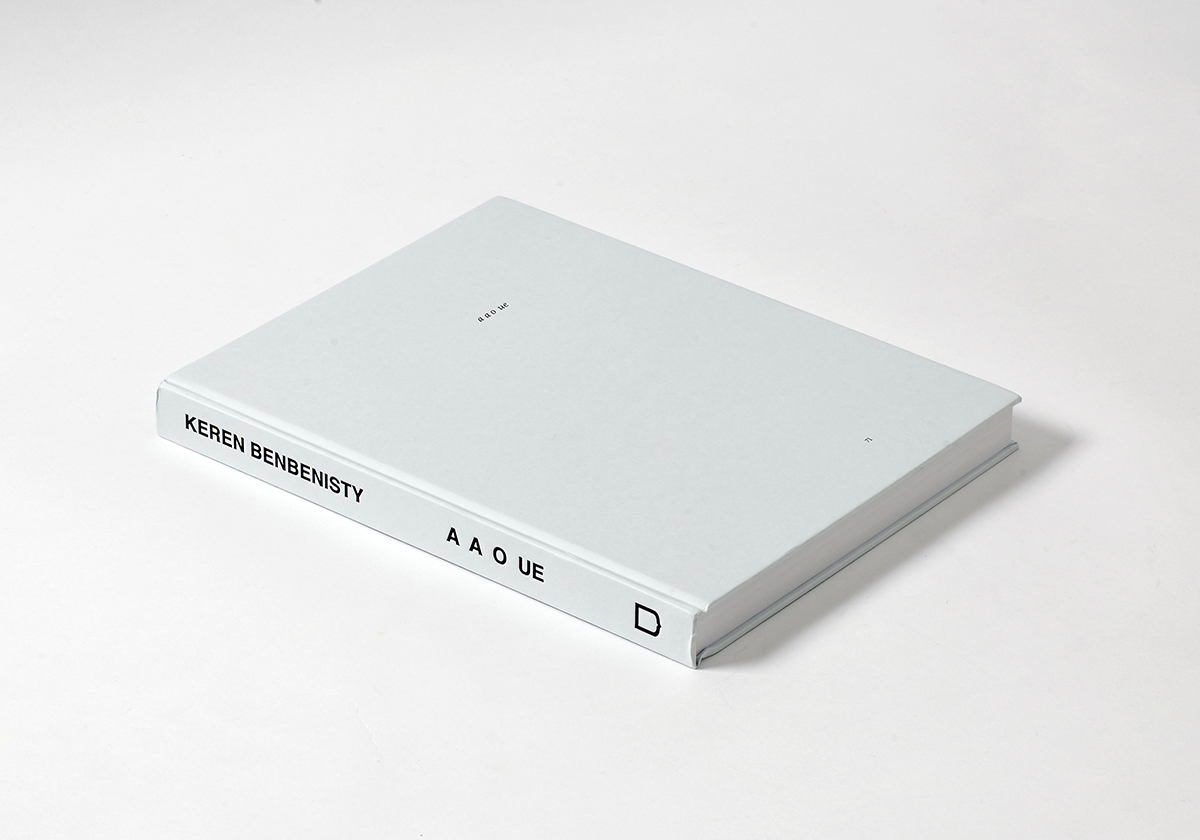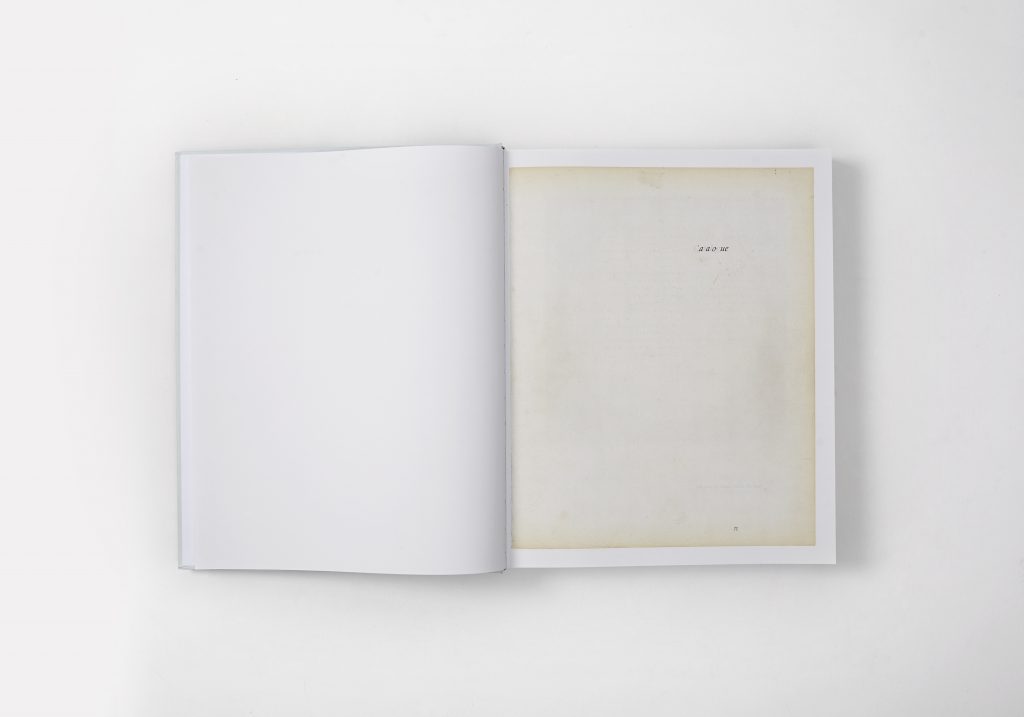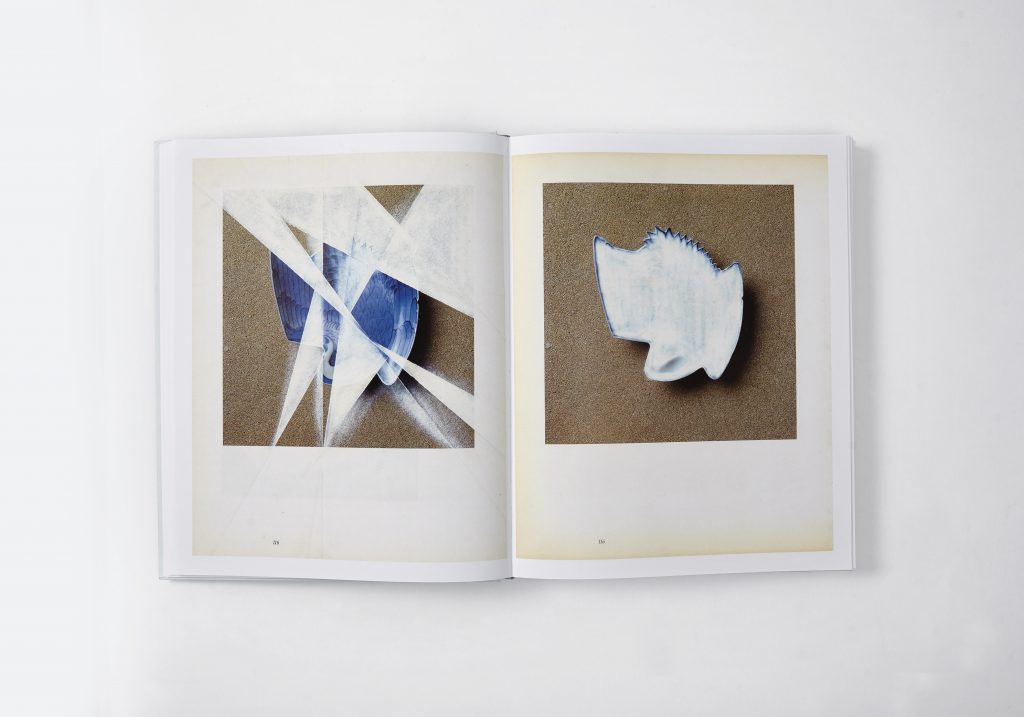
AAOUE
Artist book, hardcover, 276 pages, edition of 500. 9 3/4 x 12 1/4 in. / 24.5 x 31 cm.
Published by Sternthal Books Ltd.
AAOUE an artist book made out of 276 drawings – erased offset sheets from a deconstruction of The Burghley Collection: a catalogue showcasing a collection of antique Oriental porcelains from 17th century Japan.
The original catalogue manifest early points of contact between the Orient and the Occident and attest to a cross-cultural fertilization in the pre-industrial era that can be read into their decoration. ‘a politic of the decorative,’ the porcelains were intended for Western export, catering to Western taste for the Oriental. The shape of the ceramics often followed European designs, while the painted decorations had the charge of representing the object’s Eastern origin.
The porcelains in the collection signify exchange and cultural hybridity, but they also speak of the exoticization of the other, and implies issues of domination and power. The gesture of effacement revisits the chosen ‘cultural object’ through its printed form, making it appear and disappear simultaneously, and eventually turning it into a new image. It is an operation that marks and highlights as much as it erases. The erasing gesture is a way of doubting, or denying what is there.


In search of “the void of paper, that whiteness defends,” (Stéphane Mallarme) the origin of printed matter and the beginning of the artistic gesture, and the moment before anything at all inscribes itself on the page, I erased the prints using a simple rubber eraser, first freely and later using scotch tape. Individual pieces of tape were cut into shape, placed on the page, removed and re-taped, (as in stone carving) until the right composition was reached. Similar to archeological excavation I carefully remove layers of ink, whereas an archeologist assembles fragments into whole forms to reconstruct the past, I seek to erase identity thereby reassigning origins. The underlying urge is one of concealment rather than discovery, and the process involves breakage rather than assembly.
‘Revolution’ traditionally refers to rupture and change, but the etymology of it suggests a cyclical, circular movement, which is how it was used and understood in early modernity. Displaying the entire erased book in open spreads arranged within vitrines in the space, will reveal its archival qualities. The piece illustrates an unwinding cyclical action, making the book (and the porcelains) reconstitutes their original status as three-dimensional objects. The term ‘revolution’ thus contains within it both of these temporalities, continuously revisiting the past, as in a Nietzschean ‘eternal return,’ as well as a forward-facing movement aimed at renovation and rupture from the present. It is this duality that I try to enact and animate through the gestures that I employ in my work.